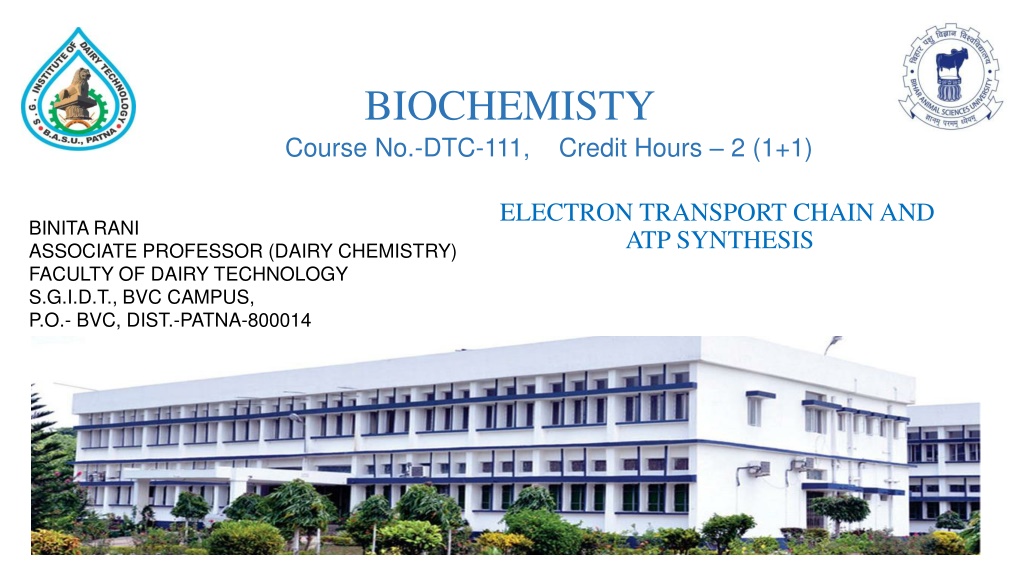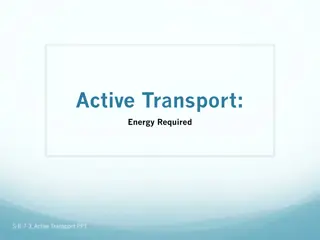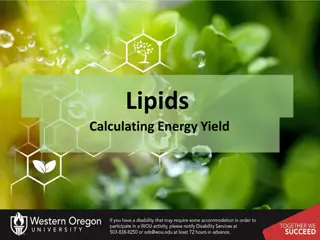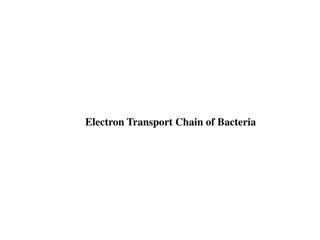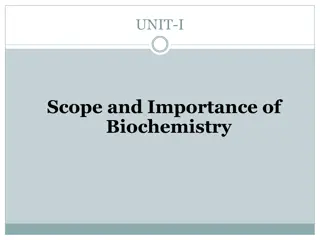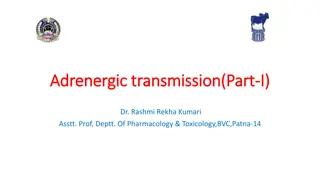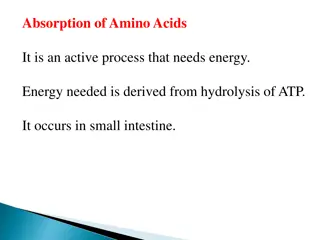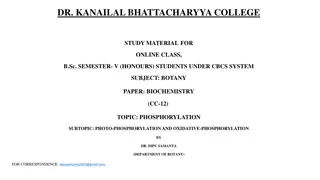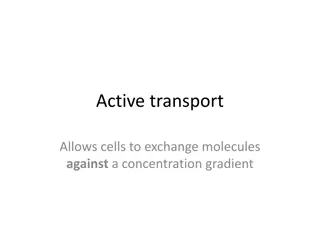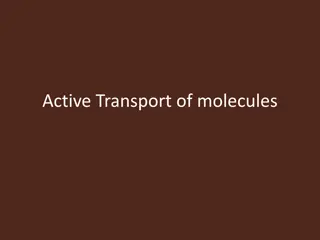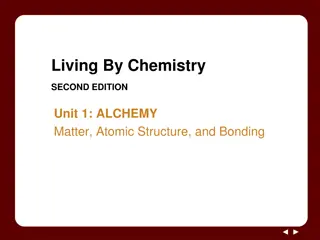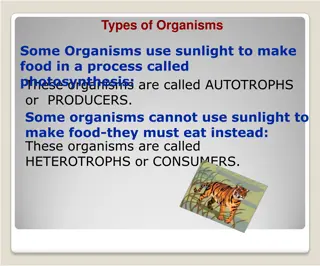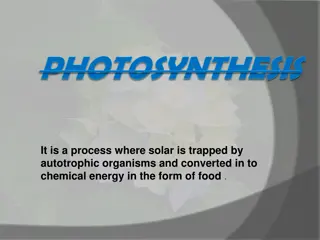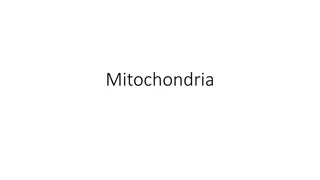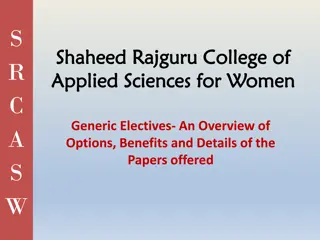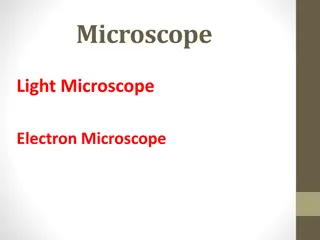Understanding Electron Transport Chain and ATP Synthesis in Biochemistry
This course delves into the intricacies of electron transport and oxidative phosphorylation in biochemistry, elucidating how NADH and FADH2 are re-oxidized to generate ATP in eukaryotes and prokaryotes. It explores redox potential, oxidation-reduction reactions, and the role of standard redox potential in biological systems. The content highlights the transfer of electrons and how substances with positive and negative redox potentials interact in cellular processes. A comprehensive study on the essential concepts of energy transfer and electron affinity in biological systems is presented in a clear and concise manner suitable for students and professionals alike.
Download Presentation

Please find below an Image/Link to download the presentation.
The content on the website is provided AS IS for your information and personal use only. It may not be sold, licensed, or shared on other websites without obtaining consent from the author. Download presentation by click this link. If you encounter any issues during the download, it is possible that the publisher has removed the file from their server.
E N D
Presentation Transcript
BIOCHEMISTY Course No.-DTC-111, Credit Hours 2 (1+1) ELECTRON TRANSPORT CHAIN AND ATP SYNTHESIS BINITA RANI ASSOCIATE PROFESSOR (DAIRY CHEMISTRY) FACULTY OF DAIRY TECHNOLOGY S.G.I.D.T., BVC CAMPUS, P.O.- BVC, DIST.-PATNA-800014
In phosphorylation => inner mitochondrial membrane. eukaryotes => Electron transport and oxidative These processes => re-oxidize NADH and FADH2 <= from the citric acid cycle (mitochondrial matrix ), glycolysis (cytoplasm ) and fatty acid oxidation ( mitochondrial matrix ) and => trap the energy released as ATP. Oxidative phosphorylation => major source of ATP in the cell. In prokaryotes => electron transport and oxidative phosphorylation components => in the plasma membrane.
Redox Potential Oxidation => loss of electrons. Reduction => gain of electrons. In chemical reaction : if one molecule is oxidized => another must be reduced . i.e. oxidation-reduction reaction => transfer of electrons.
when NADH => oxidized to NAD+ => it loses electrons. When molecular oxygen => reduced to water => it gains electrons :
Oxidation-reduction potential, E, (redox potential) a measure of affinity of a substance for electrons and is measured relative to hydrogen. Positive redox potential substance => higher affinity => electrons than hydrogen so would accept electrons from hydrogen, e.g., Oxygen , a strong oxidizing agent
Negative redox potential substance has a lower affinity for electrons than does hydrogen would donate electrons to H+, forming hydrogen, e.g., NADH , a strong reducing agent
For biological systems, standard redox potential for a substance (E0 ) measured at pH 7 & expressed in volts. In oxidation-reduction reaction electron transfer is occurring total voltage change of the reaction (change in electric potential, E) => is the sum of voltage changes of individual oxidation-reduction steps.
Standard free energy change of a reaction at pH 7 => G0=> calculated from the change in redox potential E0 of substrates and products: G0 = -n F E0 Where, n -- number of electrons transferred, E0 -- in volts (V), G0 -- in kilocalories per mole (kcal mol-1) and F -- constant called Faraday (23.06 kcal V-1 mol-1).
A reaction with a positive E0 has a negative G0 (i.e., is exergonic). Thus for the reaction:
NADH oxidation and ATP synthesis not occur in a single step. Electrons not transferred from NADH oxygen directly. Electrons are transferred from NADH oxygen along a chain of electron carriers called electron transport chain (respiratory chain).
Electron Transport Chain Consists of 3 large protein complexes embedded in inner mitochondrial membrane : NADH dehydrogenase complex (Complex I) Succinate Q reductase The cytochrome bc1 complex (Complex II) cytochrome oxidase ( Complex III)
Electrons flow from NADH to oxygen through these three complexes Each complex contains several electron carriers work sequentially carry electrons down the chain. 2 free electron carriers are also needed to link these large complexes: Ubiquinone {coenzyme Q (CoQ)} cytochrome c
ATP Synthesis (Oxidative Phosphorylation) NADH and FADH2 are oxidized by electron transport through respiratory chain Synthesis of ATP. Energy liberated by electron transport => used to create a proton gradient across the mitochondrial inner membrane => that is used to drive ATP synthesis (chemiosmotic hypothesis) in presence of ATP synthase .
Thus the proton gradient couples electron transport and ATP synthesis . (not a chemical intermediate as in substrate level phosphorylation.) (enzyme originally ATPase because without input of energy from electron transport the reaction can reverse and actually hydrolyzes ATP.)
Summary Electron transport down the respiratory chain from NADH oxidation => causes H+ ions to be pumped out into the inter membrane space by three H+ pumps NADH dehydrogenase, cytochrome bc1 complex and cytochrome oxidase. Free energy change => in transporting an electrically charged ion => across a membrane => leads to formation of electrochemical proton gradient.
The pumping out of H+ ions generates a higher concentration of H+ ions in inter membrane space and an electrical potential the side of the inner mitochondrial membrane facing the inter membrane space positive. Protons flow back mitochondrial matrix according to electrochemical gradient through ATP synthase drives ATP synthesis. The ATP synthase is driven by proton-motive force which is the sum of pH gradient (the chemical gradient of H+ ions) and membrane potential (electrical charge potential across the inner mitochondrial membrane).
FADH2 is re oxidized via ubiquinone its oxidation causes H+ ions to be pumped out only by the cytochromebc1 complex and cytochrome oxidase so the amount of ATP made from FADH2 is less than from NADH. Measurements show that 2.5 ATP molecules are synthesized per NADH oxidized whereas 1.5 ATPs are synthesized per FADH2 oxidized.
